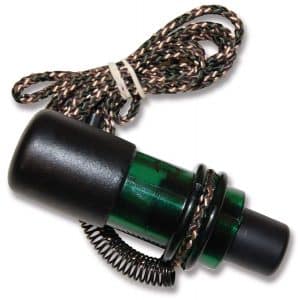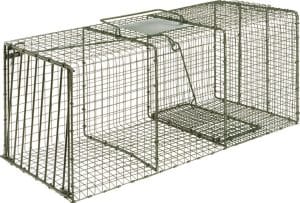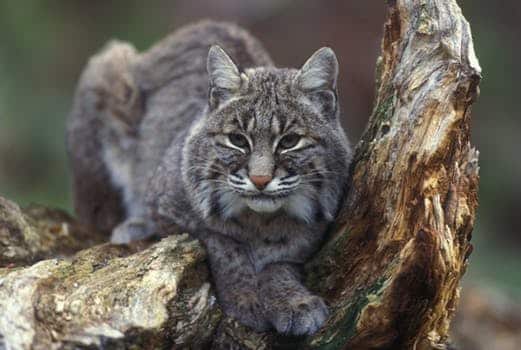When you think of fur trappers you might imagine a frontiersman with a coonskin cap and pelts lining his canoe. Many of the techniques haven’t changed in centuries. The only real difference is access to hunting locations. One of the most coveted furs a trapper can catch is a Bobcat. Real Bobcat fur coats can sell for thousands of dollars on the internet. Bobcats aren’t all that rare, but they are a protected species in some states. So keep your local hunting laws in mind when you’re setting up traps. Many people have an issue with the animal cruelty aspect of trapping, but if you respect the sport and check your traps frequently you can respectfully harvest live game. If you follow a few of these bobcat trapping tips you should catch a cat in no time.
Bobcat trapping is one of the most difficult things a hunter can do. Not only are bobcats more intelligent than raccoons possum and skunks, there’s not a lot of information available about trapping them. Whether your trapping bobcats for sport or because they’re a nuisance animal you will need to learn everything there is to know about fur trapping.
Bobcat Trapping Tips
1. Learn Everything There is To Know about Bobcats
 Even though bobcats are smarter than your average raccoon or possum they aren’t the smartest predators in the world. They can’t hold a hat up to the intelligence of the average coyote or fox. That being said there movements make them very difficult to catch. You are much more likely to find a raccoon or possum in your traps than a bobcat. Bobcats tend not to work a set hard, they usually walk up take a few sniffs and walk off. So you need to make sure the trap is enticing enough to catch their eye. You might also want to pick up a book on Bobcat Hunting. I Would recommend Predator Hunting: A Complete Guide to Hunting Coyotes, Foxes, Bobcats, Bears, and More. This book focuses mostly on hunting coyotes, but there’s a good section on hunting Bobcats as well. Plus most of the information on coyotes applies to bobcats as well.
Even though bobcats are smarter than your average raccoon or possum they aren’t the smartest predators in the world. They can’t hold a hat up to the intelligence of the average coyote or fox. That being said there movements make them very difficult to catch. You are much more likely to find a raccoon or possum in your traps than a bobcat. Bobcats tend not to work a set hard, they usually walk up take a few sniffs and walk off. So you need to make sure the trap is enticing enough to catch their eye. You might also want to pick up a book on Bobcat Hunting. I Would recommend Predator Hunting: A Complete Guide to Hunting Coyotes, Foxes, Bobcats, Bears, and More. This book focuses mostly on hunting coyotes, but there’s a good section on hunting Bobcats as well. Plus most of the information on coyotes applies to bobcats as well.
2. Finding a Bobcat
The hardest part is finding a location to hunt or trap your bobcat. Luckily bobcats are like most house cats they tend to follow the same pattern over and over again. If you see a bobcat trail there’s a good chance he will come back to that same location soon. All cats are predatory animals that don’t stray to far from their own territory. You are going to want to look for cat sings where there are a lot of rabbits, rodents and roosting birds. Bobcats have a typical home range anywhere from 25-36 miles so finding one is going to be your biggest challenge.
3.Use The Weather To Your Advantage
Finding a Bobcat is extremely difficult. The easiest way to find a bobcat is to wait for the weather to turn and a little snow is on the ground. You’re going to want to find an area with the thickest cover and a large rabbit population. Then find a road or snowmobile trail that rides through it and drive those roads throughout the night. If you can get there before the plow you’ll know where the bobcat crosses the trail. Then follow the tracks until you hopefully find a place the cat made a kill. If you get that lucky you’ll be able to call him to you. If he doesn’t come you’ll know that is part of his usual hunting grounds for future use.
4. Calling Bobcats
 There are a wide variety of sounds you can use to call a bobcat. Most standard predator calls will work, but I like to use a basic Cottontail Distress Call. If the cat is near he won’t be able to resist an injured rabbit. You’re going to need to call for 10-20 minutes so you might want to consider purchasing an electronic call like the Call of the Wild Electronic Game Call. I personally enjoy calling them in with a basic call but it can get tiresome after a while. You will want to put some variation into your call to keep the cats attention. If you don’t get any bites after a while continue following the trail another 100 yards or so and try again. If you choose locations between their bedding and watering areas there’s a good chance you’ll find a cat.
There are a wide variety of sounds you can use to call a bobcat. Most standard predator calls will work, but I like to use a basic Cottontail Distress Call. If the cat is near he won’t be able to resist an injured rabbit. You’re going to need to call for 10-20 minutes so you might want to consider purchasing an electronic call like the Call of the Wild Electronic Game Call. I personally enjoy calling them in with a basic call but it can get tiresome after a while. You will want to put some variation into your call to keep the cats attention. If you don’t get any bites after a while continue following the trail another 100 yards or so and try again. If you choose locations between their bedding and watering areas there’s a good chance you’ll find a cat.
5. Choosing Lures And Your Trap
Deer hunters know the importance of a good deer hunting scent lure, but that’s often overlooked when predator hunting. A good rule of thumb is that any set that will work on a coyote will work on a Bobcat. Cats will respond well to any fox, coyote or cat urine. It’s a matter of personal preference, but I haven’t seen much of a difference between the three urines. You’re going to want follow the cats patterns and set the traps accordingly. If you find a frequently traveled location you’re going to want to set a trap. Cats don’t like to move backwards so position your trap so it has a clear entrance and exit pathway. Anyone with a house cat knows how they hunt. They hunt head first with tunnel vision, so set your traps up accordingly. You need to make very visible sets with different lures and smells to attract their attention. If you can hold the cats interest you should be able to catch him.
You’re going to want to mix a bait that attracts the bobcat. Try mixing various meats with urine scents and various fur or feather scraps. You’re really going to have to play around to get the mixture right. The more experimenting you do the more likely you’ll catch a bobcat. Since bobcats are carnivores there really isn’t much to go into baiting. They love to eat fish, rabbit, squirrel, rats. Basically any small game they would find in the field. Mixing it all up and adding some urine will lure cats in no time.
6. Trailing Bobcats into The Cage Trap
 You really can use any standard Spring Trap made for a coyote or fox. I personally prefer to use a Cage Trap around my farm. Cage traps give you a little more freedom to experiment. Plus I don’t have any angry neighbors when I accidentally trap there cats or small dogs. The problem with a cage trap is that cats don’t like to go somewhere they’ll have to back out of. So you need to plan accordingly and show him how to get into the trap. Leaving a scent trail walking into the trap is the perfect way to get him to follow. He’ll have a natural inclination to investigate if he believes another animal entered before him. If you place the trap somewhere near a bobcats feeding watering and bedding area you should see some interest quickly. It’s really a matter of persistence. Cats are naturally nosy but it’s hard to get them to take the bait. If you’re only setting up a few traps try setting a trail camera so you know if the cat’s showing any interest.
You really can use any standard Spring Trap made for a coyote or fox. I personally prefer to use a Cage Trap around my farm. Cage traps give you a little more freedom to experiment. Plus I don’t have any angry neighbors when I accidentally trap there cats or small dogs. The problem with a cage trap is that cats don’t like to go somewhere they’ll have to back out of. So you need to plan accordingly and show him how to get into the trap. Leaving a scent trail walking into the trap is the perfect way to get him to follow. He’ll have a natural inclination to investigate if he believes another animal entered before him. If you place the trap somewhere near a bobcats feeding watering and bedding area you should see some interest quickly. It’s really a matter of persistence. Cats are naturally nosy but it’s hard to get them to take the bait. If you’re only setting up a few traps try setting a trail camera so you know if the cat’s showing any interest.
Following the above tips should put you on the right path to trapping and hunting your first bobcat. For more information about trapping read the book Predator Hunting: A Complete Guide to Hunting Coyotes, Foxes, Bobcats, Bears, and More

